5 Recipes to Make for Lunar New Year
Welcome the Year of the Dragon with fortune-telling soups, lucky goldfish dumplings, and more.
In 2024, February 10 marks the beginning of the Lunar New Year. Traditions for the start of the lunisolar calendar vary across East and Southeast Asia, spanning from China’s Chūnjié to Vietnam’s Tết to South Korea’s Seollal and beyond. But no matter where you celebrate, you’re sure to find symbolic foods meant to bring luck and prosperity.
These dishes often involve clever wordplay, auspicious colors, and even some good old-fashioned divination. From hearty soups that hide fortunes to gorgeous goldfish dumplings, here are a few Lunar New Year dishes you can make to usher in the Year of the Wood Dragon.
1. Tāngyuán
Many foods that grace the New Year table celebrate clever wordplay. Some dish names do double-duty, as they are also homonyms for words like prosperity, good fortune, or being with family. For example, tāngyuán (汤圆) are small rice dumplings whose name sounds like the Mandarin word for “reunion.”
Tāngyuán, which translates to “soup balls,” consist of mochi-like wrappers and sweet fillings served in a warm syrup on the last day of the New Year festivities. Though the dumplings traditionally take the form of smooth, white balls, some modern cooks have embraced a more artistic approach. Recent renditions include tāngyuán shaped and colored to resemble everything from flowers to fruit to animals.
In her article for Gastro Obscura, Grace Kwan delves into the history of these dumplings and provides a recipe for tāngyuán shaped like gorgeous goldfish. In another nod to New Year wordplay, the Mandarin word for “goldfish,” jīnyú (金鱼) is a homonym for “gold and jade,” which symbolize good fortune and wealth.
Get the recipe >>
2. Guthuk
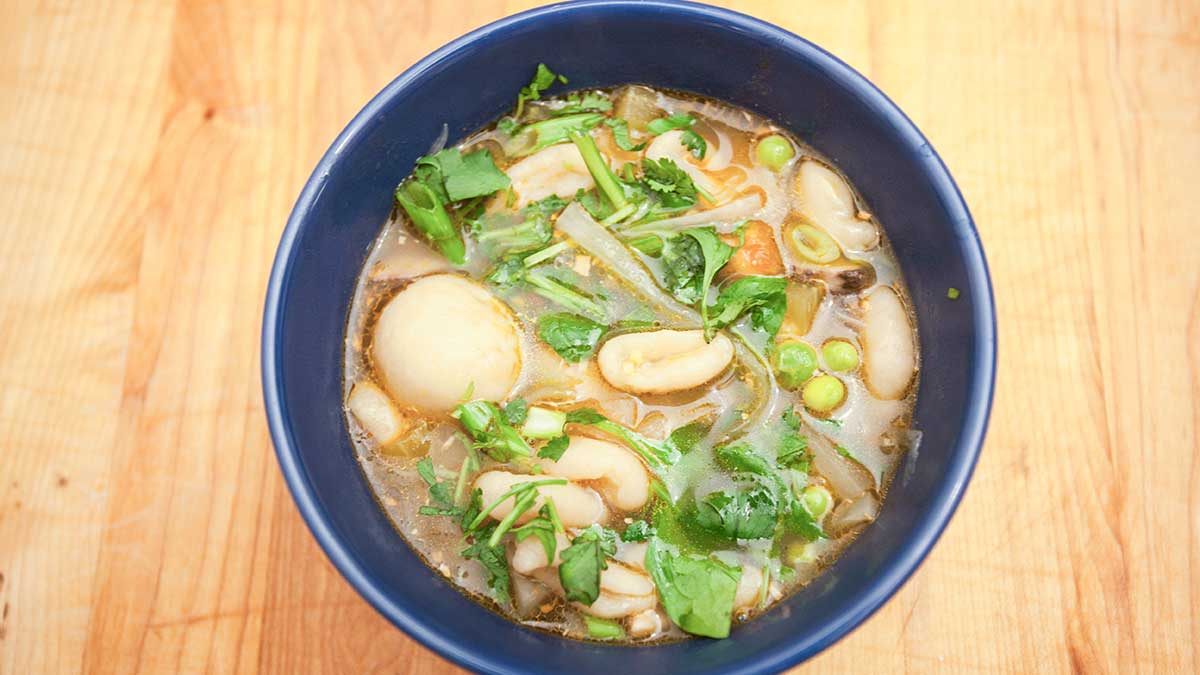
On the eve of Losar, Tibet’s New Year, loved ones gather around a table with servings of guthuk. Floating in each bowl, among chunks of beef or yak meat, dried cheese, hand-pulled noodles, and vegetables, is a big ball of dough. Though the recipe is a variation on the traditional Tibetan noodle soup thukpa bhatuk, this orb is what makes it a once-a-year specialty.
Each ball contains a slip of paper or object meant to symbolize the character of its recipient. Though the labels aren’t always flattering, it’s all in good fun. Draw salt (tsa), and it means you’re lazy; get wool (bay) and it means you’re kind-hearted; find a thread rolled inward (kuba nandrim) and it means you’re lucky.
Whether you draw a positive or negative assessment, it can serve as a guide to keep up the good work or change in the year ahead.
Get the recipe >>
3. Xôi Gấc
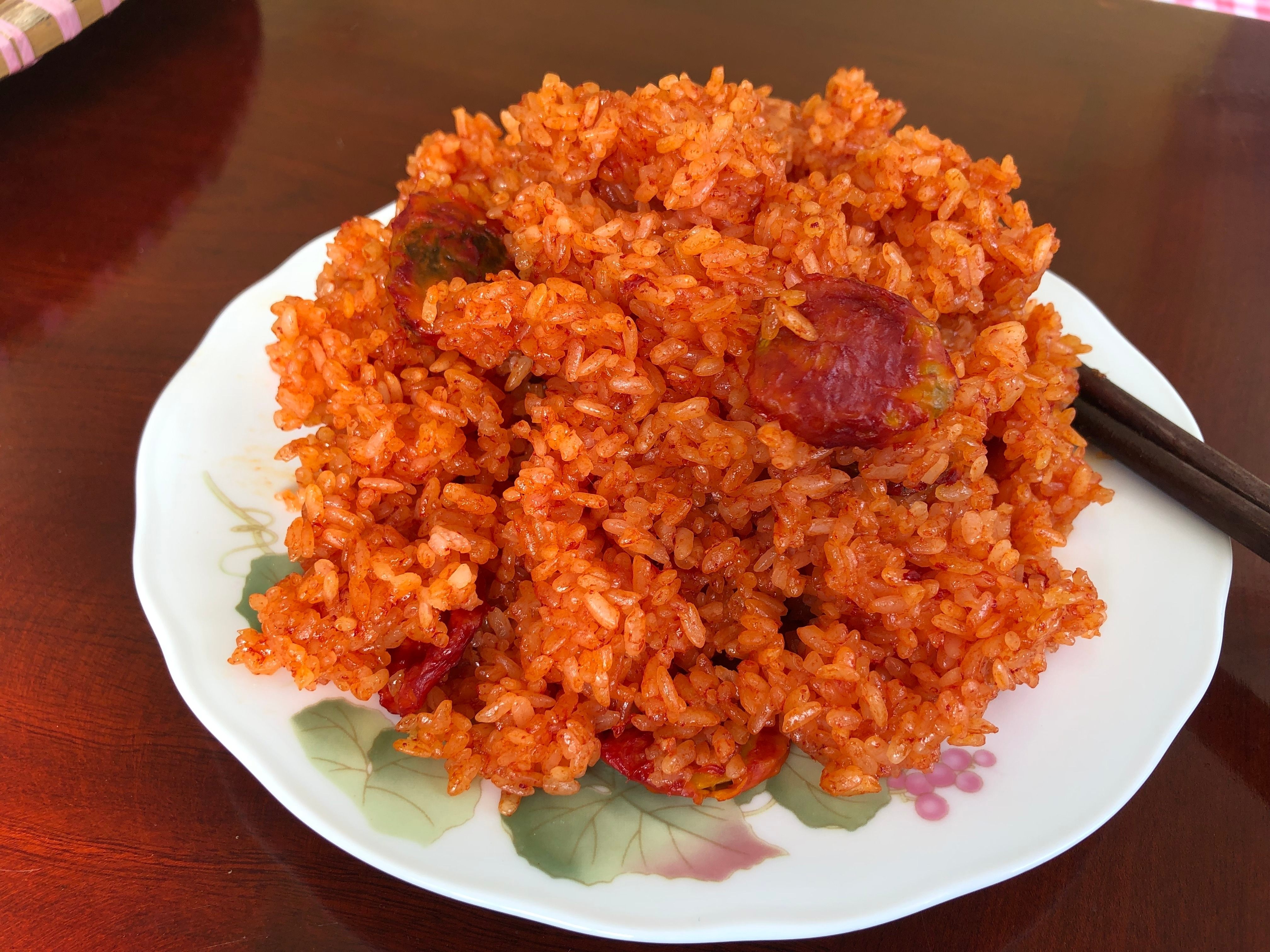
Red is an auspicious color for Lunar New Year. When they want a ruby-tinted dish, Vietnamese cooks turn to gấc, a spiky fruit that contains blood-red pulp. When I was in Vietnam for Tết a few years ago, I saw countless street stalls selling rainbows of differently-colored sticky rice. For a truly prosperous year, the best choice is always xôi gấc: red-tinged rice, dyed with gấc.
Gấc can be tough to find in the United States. You can check local Asian markets or H Mart (which sometimes sell it as a paste in the frozen food aisle under the name “baby jackfruit”). I couldn’t find the fruit itself, but was able to track down premade xôi gấc at a bakery in Philadelphia’s Little Saigon neighborhood. If you come up short on finding either, substitute red food coloring in the recipe to get that prosperous hue.
Get the recipe >>
4. Nián Gāo
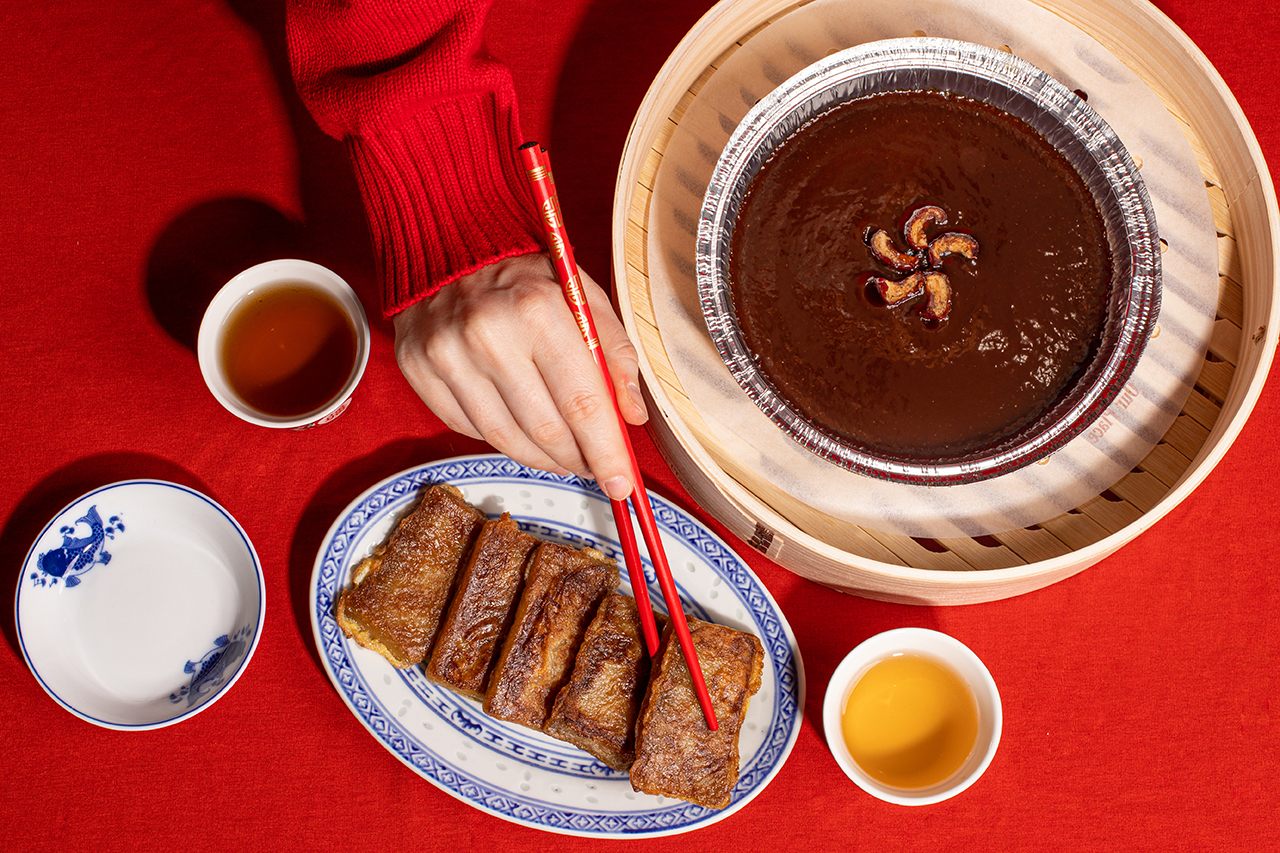
Every Chinese New Year, lion dancers reenact the legend of Nian, a monster that tormented a small village. The performance captures the story of how a village dispelled Nian by sating the monster with cake and scaring it with firecrackers.
Families will make this same sticky cake, known as nián gāo, to ward off bad luck and welcome good fortune. While the monster story is a beloved New Year tradition, it’s possible that it was fabricated to be just that. The cake’s very name is tailor-made for the holiday: In Mandarin, nián and gāo translate to “year” and “cake” respectively.
Though the recipe sounds simple—just glutinous rice flour, brown sugar, and water—the sticky texture can be challenging for first-timers. But Gastro Obscura writer Jess Eng’s recipe carefully walks novices through this tricky treat.
Get the recipe >>
5. Dragon’s Beard Candy

This one isn’t a traditional Lunar New Year treat, but this is the Year of the Dragon, so it’s the perfect time to try dragon’s beard candy. The sweet gets its name for its hand-pulled strands of sugar, which are so fine that they resemble hair, or, if you’re feeling fanciful, a mythical dragon’s beard.
Various cultures have their own versions of hand-pulled sugar strands. In China, it goes by its dragon moniker; in Iran, it’s pashmak; in South Korea, it’s ggultarae. Seoul vendors are particularly adept at the delicate pull-and-twist technique needed to turn a thick ring of malleable sugar syrup into thousands of tiny wisps.
Making dragon’s beard candy takes considerable skill and patience. Gastro Obscura friend and collaborator EmmyMade tried her hand at this recipe and included her failed attempts in her video to drive home just how challenging it can be. But stick with it: The results make for a gorgeous, festive, and delicious tribute to the animal of the year.
Get the recipe >>
Gastro Obscura covers the world’s most wondrous food and drink.
Sign up for our regular newsletter.



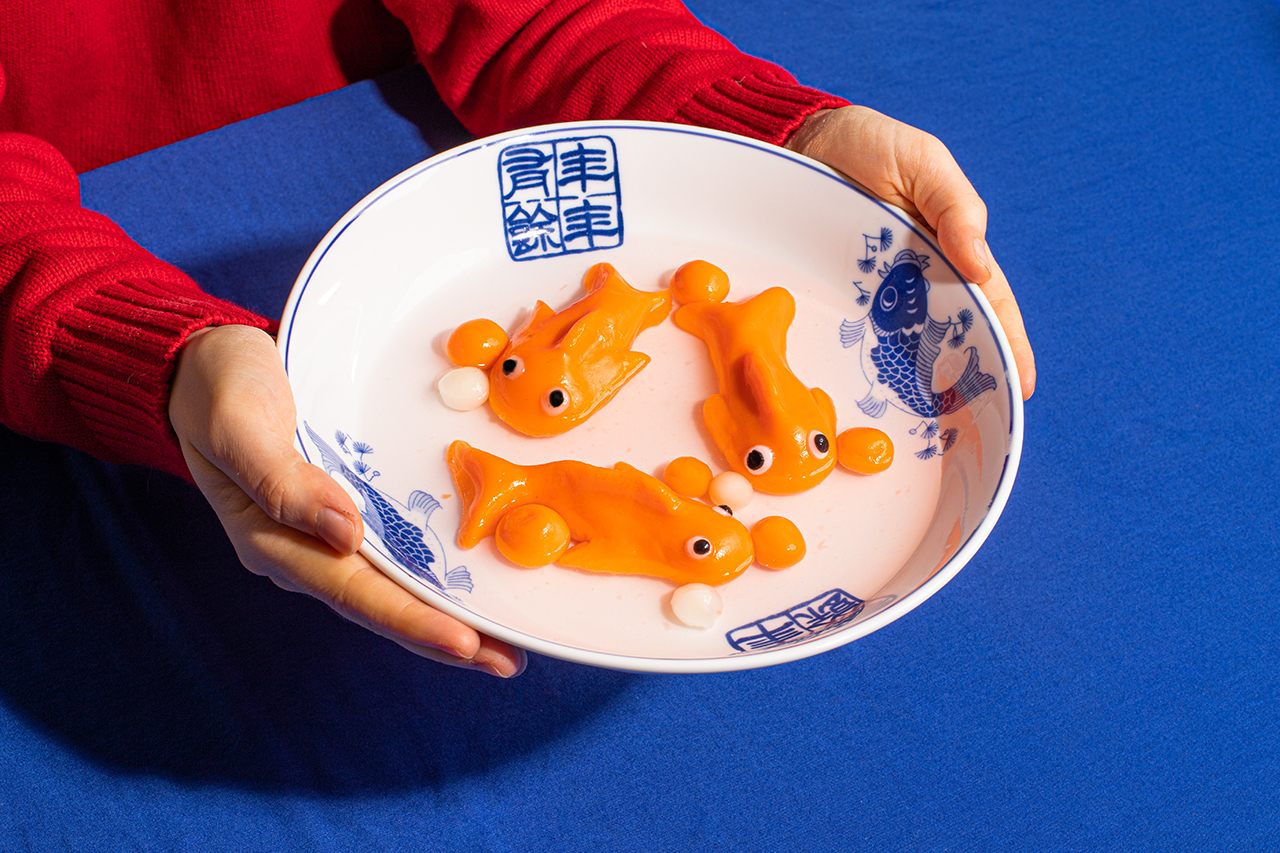







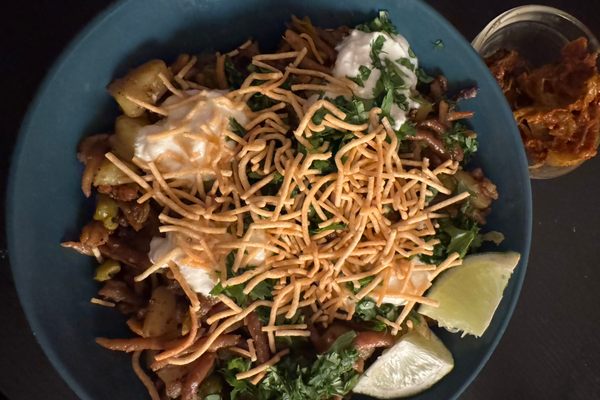










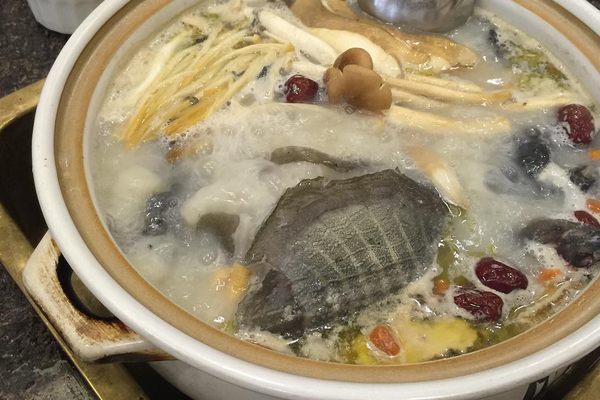





Follow us on Twitter to get the latest on the world's hidden wonders.
Like us on Facebook to get the latest on the world's hidden wonders.
Follow us on Twitter Like us on Facebook